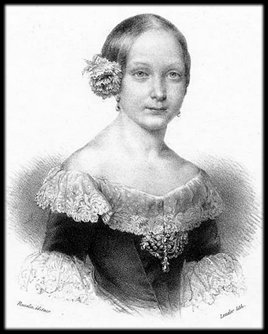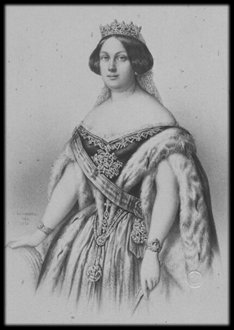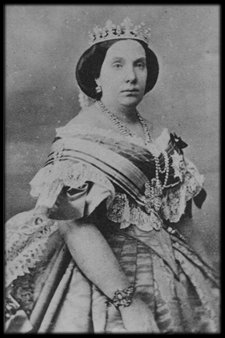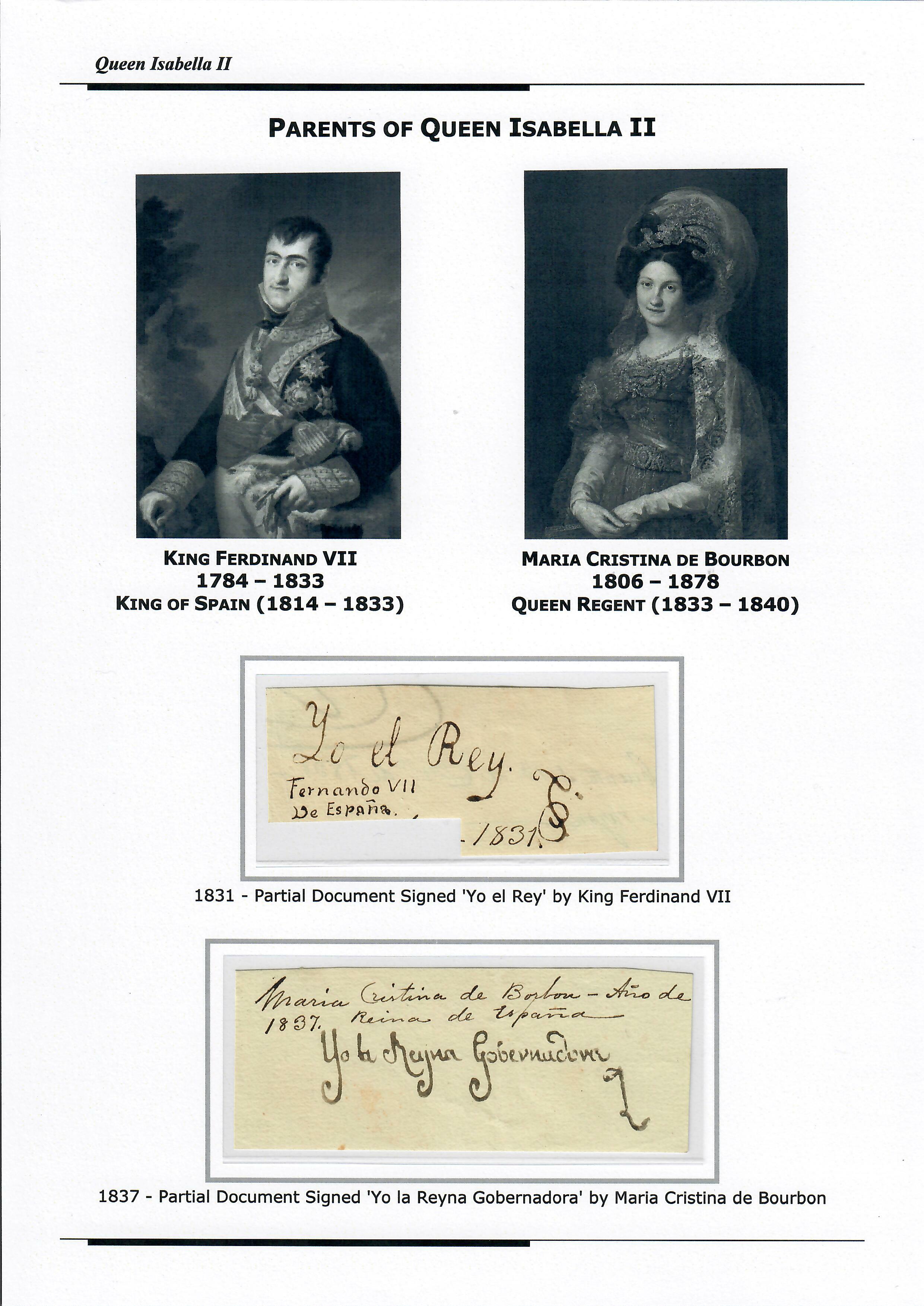|
Spanish-Philippines
Reign
of Queen Isabella II
1854
1864
Nigel Gooding Collection

The
Issued Stamps and Their Forgeries
The Philippines holds the distinction of being
the first country in Asia to produce postage stamps for use across the Islands,
with the first set issued on February 1, 1854. This Spanish-Philippine
collection focuses on stamps and covers issued during the reign of Queen
Isabella II. Eleven separate issues, with a total of 22 different stamps,
were produced over an eleven year period. All stamps profile Isabella's
portrait in a multitude of different designs.
This collection also focuses on the extensive
array of forgeries which plagued every issue prepared during Isabella's reign
just over five times the number of genuine stamps issued. Out of a total of
116 different forgeries recorded to date, 112 of these forgeries are included
in this collection, making it the most comprehensive assemblage of forgeries
recorded from this period.
Outline
and Key Features of the Collection
This collection is arranged in chronological
order of stamp issues. These issues are represented by unused and used
stamps, multiples and covers. Additionally, the forgeries produced for each
issue, including those by such well known forgers as Jean de Sperati,
Engelhardt Fohl, Oswald Schrőder,
Senf Brothers, and Miguel Sequi
are illustrated immediately thereafter to demonstrate not only the very well
made and dangerous forgeries which have seriously confounded and troubled
collectors over the years, but also those poorly made forgeries which were
obviously not genuine issues, but which nonetheless caused concerns, in some
instances, for less experienced collectors. The collection includes a number
of die proofs and forgeries in largest recorded multiples.
Queen
Isabella II of Spain
Reign Between September 29, 1833 and September 30, 1868
 Isabella was born in
Madrid on October 10, 1830. She was the eldest daughter of King Ferdinand VII
and his fourth wife, Maria Cristina, a Neapolitan Bourbon. Maria Cristina
became Queen-Regent on September 29, 1833, when her daughter Isabella, at the
age of three years, was proclaimed queen on the death of her father. Isabella was born in
Madrid on October 10, 1830. She was the eldest daughter of King Ferdinand VII
and his fourth wife, Maria Cristina, a Neapolitan Bourbon. Maria Cristina
became Queen-Regent on September 29, 1833, when her daughter Isabella, at the
age of three years, was proclaimed queen on the death of her father.
Queen Isabella II
succeeded to the throne as a result of King Ferdinand VII inducing the
Spanish Cortes to assist him in setting aside the Spanish Salic law of Philip
V, introduced by the Bourbons in the early 18th century, which declared that
only the male line should succeed to the Spanish throne. Instead, he
convinced the Spanish Cortes to re-establish the older succession law of
Spain, allowing Isabella II rightful succession to the throne.
This change meant that
Carlos V, the brother of King Ferdinand VII, was denounced as king and became
the Pretender. Don Carlos disputed Isabella's right to succeed to the throne
and her accession precipitated seven years of civil war. During this time, Don
Carlos, with the help of the Holy See, Austria, Russia, Prussia and the
Italian Kingdoms organised a coalition aimed at seizing power. Civil war
dragged on until August 31, 1839, when the Agreement of Vergara, ratified
between General Baldomero Esparto and the Carlist
General Rafael Maroto was put into effect, whereby
Isabella II was recognised as Queen of Spain.
Isabella s rights were
only maintained through the support of the army, the Cortes and the Liberals
and Progressists, who at the same time established constitutional and
parliamentary government, dissolved the religious orders, confiscated the
property of the orders including the Jesuits, and attempted to restore order
in finances.
Maria Cristina
remained Queen-Regent until a secret marriage to an ex-sergeant from the royal guard, Don
Fernando Mu oz, which took place on December 28, 1833, shortly after the
death of the king, became public knowledge. The Queen-Regent s position was
undermined by news of her re-marriage and concerns that Maria Cristina was
not actually supportive of her liberal ministers and their policies.
Eventually, the army, which was the backbone of Isabella II s support, and
the liberal leadership in the Cortes combined to demand that Maria Cristina
stand aside from her Regency, where she was forced to leave Spain. On October
12, 1840, the most successful and most popular general of the Isabelline
armies, General Baldomero Espartero, replaced her
as Regent.
A military revolt was instigated
by Maria Cristina from exile in Paris, supported by noted generals, started
on September 27, 1841 and continued with a serious rebellion a year later
with bombardment of Barcelona. In May 1843, Espartero was turned out by a
military and political pronunciamiento, led by Generals Leopoldo O Donnell
and Ram n Mar a Narvaez, who formed a cabinet, presided over by Joaquin Maria
Lopez. This government induced the Cortes to declare Isabella, who at the
time was thirteen, of age to rule Spain. On November 10, 1843, she swore
loyalty to the Constitution and began her personal rule as Queen Isabella II.
After an unsuccessful attempt to return to power, Maria Cristina retired
permanently to exile in France after 1844.
The Queen, at age
sixteen, was married on October 10, 1846 to her cousin, Francisco de Asis de Borbon  (Duke of Cadiz), then
twenty-four years of age. The King Consort was not of Isabella s own choice
nor her liking and in fact lived mainly separate from him. The Queen was
believed to have had a constant string of lovers, most notably her Prime
Ministers. (Duke of Cadiz), then
twenty-four years of age. The King Consort was not of Isabella s own choice
nor her liking and in fact lived mainly separate from him. The Queen was
believed to have had a constant string of lovers, most notably her Prime
Ministers.
 The period of
Isabella's personal rule (1843-1868) was characterized by political unrest
and a series of uprisings. She showed most favour to her reactionary generals
and statesmen, to the Church and religious orders, and was constantly the
tool of corrupt and profligate courtiers and favourites who gave her Court a
bad name. Her government was dominated by military politicians, most notably
General Ram n Mar a Narv ez and the somewhat more liberal General Leopoldo
O'Donnell. Liberal opposition to the regime's authoritarianism became
increasingly directed at the Queen. Scandalous reports on the private conduct
of Isabella, as well as her arbitrary political interference, further damaged
the monarchical cause. The abortive uprising of 1866, and the deaths of
O'Donnell (1867) and Narv ez (1868), weakened her position further, and gave
wide support to the military rising against Isabella. Her Moderado
generals had made a slight show of resistance that was crushed at the battle
of Alcolea by Marshals Serrano and Prim. On
September 30, 1868, at the age of thirty-seven, Isabella was forced from her
throne and joined her mother in exile in France. The period of
Isabella's personal rule (1843-1868) was characterized by political unrest
and a series of uprisings. She showed most favour to her reactionary generals
and statesmen, to the Church and religious orders, and was constantly the
tool of corrupt and profligate courtiers and favourites who gave her Court a
bad name. Her government was dominated by military politicians, most notably
General Ram n Mar a Narv ez and the somewhat more liberal General Leopoldo
O'Donnell. Liberal opposition to the regime's authoritarianism became
increasingly directed at the Queen. Scandalous reports on the private conduct
of Isabella, as well as her arbitrary political interference, further damaged
the monarchical cause. The abortive uprising of 1866, and the deaths of
O'Donnell (1867) and Narv ez (1868), weakened her position further, and gave
wide support to the military rising against Isabella. Her Moderado
generals had made a slight show of resistance that was crushed at the battle
of Alcolea by Marshals Serrano and Prim. On
September 30, 1868, at the age of thirty-seven, Isabella was forced from her
throne and joined her mother in exile in France.
Isabella was persuaded
to abdicate her throne in Paris on June 25, 1870 in favour of her eldest
surviving son, Alfonso XII. She returned to Spain for a time after King
Alfonso XII's accession in 1874 but was unsuccessful in influencing political
affairs, returning to Paris, where she resided for the rest of her life,
seldom travelling abroad except for a few visits to Spain. During her exile
she grew closer to her husband, with whom she maintained an ambiguous
friendship until his death in 1902. She died on April 10, 1904, aged
seventy-three, and is entombed in El Escorial in Madrid.
 xxx xxx
|